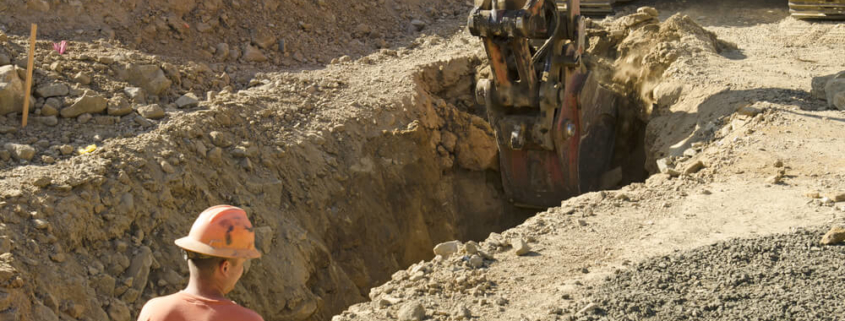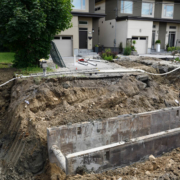Trench Safety – OSHA Guidelines on Digging and Working in Trenches
Excavation work is a vital part of any construction project, and trenches are used to create the foundation of nearly every structure, from homes and buildings to reservoirs and roadways. But these systems also expose workers to dangerous hazards.
According to the Occupational Safety and Health Administration (OSHA), excavation and trenching work has a significantly higher fatality rate than that of general construction work. Because of the high risk of injury or death that construction workers face around trenches, contractors and companies must provide adequate protection. And if any injury occurs, workers are entitled to seek justice and compensation.
Dangers of Trench Accidents
Excavation and trenching might be routine on most construction sites, but that doesn’t mean the practices are without hazards. According to the Centers for Disease Control, there is an average of 35 work-related deaths annually attributed to trenching or excavation cave-ins. And many injuries in trenches happen at depths of less than 10 feet.
OSHA reports that workers face several job site hazards related to trenching and excavation. These include:
- Cave-ins– These are the primary hazard associated with excavation and trenching work, occurring when workers enter an unprotected trench, and the walls collapse.
- Struck-by objects– This happens when a worker is struck by falling loads or collapsing walls within a trench.
- Utility lines– Worker’s risk hitting utility lines above or below a trench, leading to electrocution or a dangerous gas leak or explosion.
- Hazardous atmosphere– Some trenches are deep enough to have low oxygen levels or might be contaminated by chemicals or toxic gases.
OSHA Guidelines on Digging and Working in Trenches
The best way to protect workers from these safety hazards is to follow OSHA’s guidelines on excavation and trenching. These are outlined in 29 CFR 1926.651 and 1926.652 and include:
Trench Safety Measures
Trenches that are five feet (1.5 meters) or deeper must have a protective system unless the excavation system is constructed entirely of stable rock. If the trench is less than five feet deep, a competent person can decide whether a protective system is needed.
Trenches 20 feet (6.1 meters) or deeper must have a protective system that is designed by a registered professional engineer or be based on data approved and/or prepared by a registered professional engineer according to OSHA’s guidelines.
Competent Person
Because conditions change, OSHA regulations require that trenches be inspected daily by a competent person before workers are permitted to enter the area to ensure the absence of any hazards. OSHA defines a competent person as “an individual who is capable of identifying existing and predictable hazards or working conditions that are unsanitary, hazardous, or dangerous to others…and who is authorized to take corrective action to eliminate these conditions.”
Access and Egress
OSHA rules require that there be safe access and egress to all excavation, including ramps, steps, ladders, and other safe means of entry and exit for employees working in trenches four feet (1.22 meters) or deeper.
General Trenching and Excavation Rules
- Never work under raised loads
- Keep heavy equipment away from trenches
- Inspect trenches daily and after rainfall
- Test for toxic gases and low oxygen
- Find out where underground utilities are located
Protective Systems
When it comes to protective systems, OSHA wants you to know the 3 S’s of trenching:
- Slope or bench trench walls by cutting them back at an angle.
- Shore trench walls by inserting supports in trenches under 20 feet to prevent soil movement.
- Shield trench walls by using trench boxes or other supports to prevent soil collapse.
Common Causes of Trench Collapses
The lack of a protective system is the leading cause of trench collapses. Other factors that can contribute to the failure of trench include:
- Weak or unstable soil
- Depth of the trench
- Failure to properly inspect the trench
- Environmental factors
- Vibrations from vehicles or heavy equipment
- Proximity to previously backfilled excavations
- Stress loading on the soil
Contact OSHA Injury Attorney Today
There are a number of hazards surrounding excavation and trench work, which OSHA tries to mitigate with its regulations. But accidents and injuries still happen on construction sites daily. If you’ve been injured working around trenches or have questions about the OSHA regulations that may apply to your case, our experienced injury attorney network can help.
At OSHA Injury Attorney, we can help you understand your rights as well as what steps to take to pursue full compensation if you’ve been hurt. To learn more about our services and how our partner firms can help, contact us today.





Leave a Reply
Want to join the discussion?Feel free to contribute!